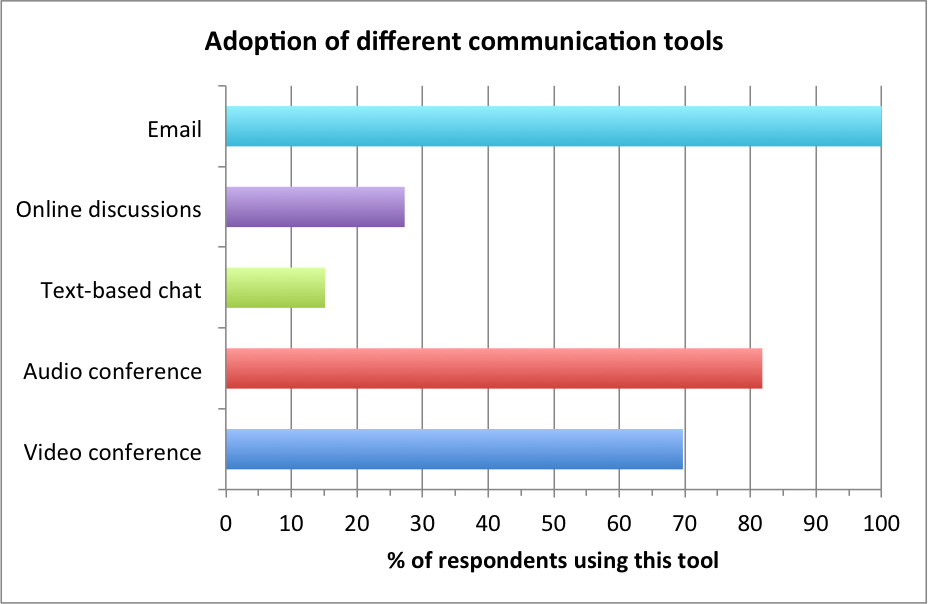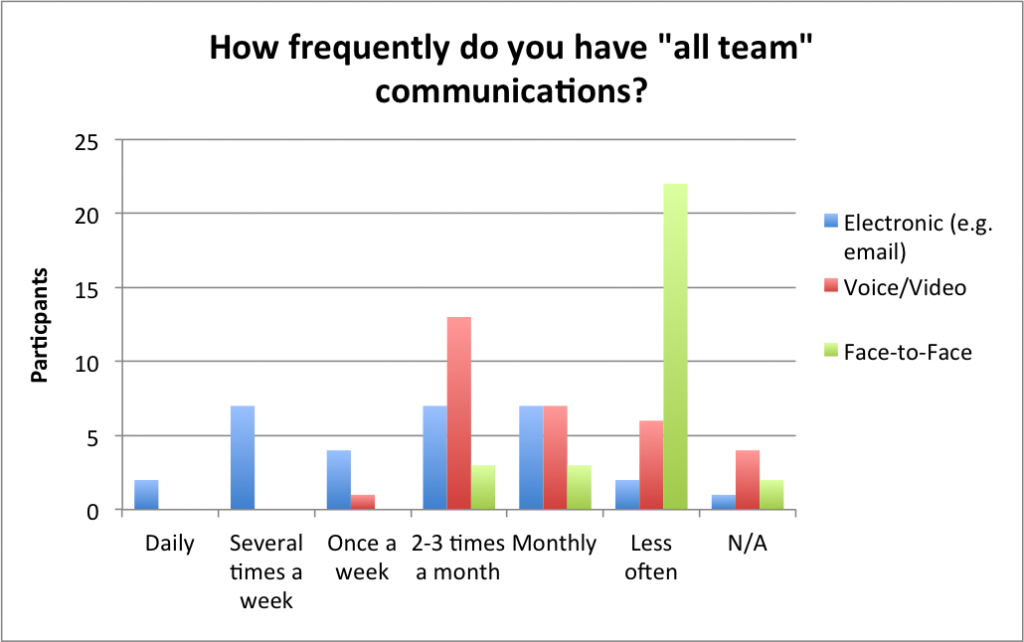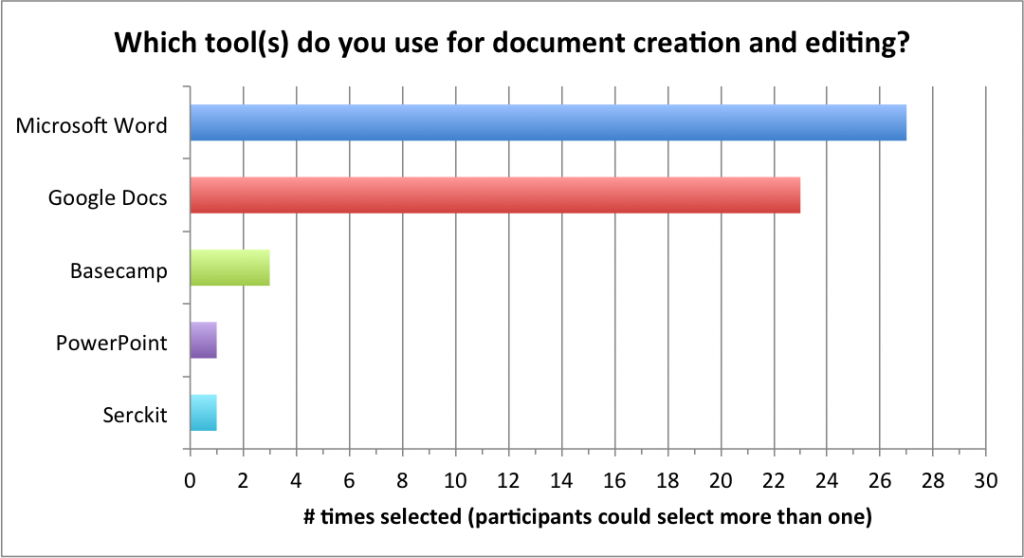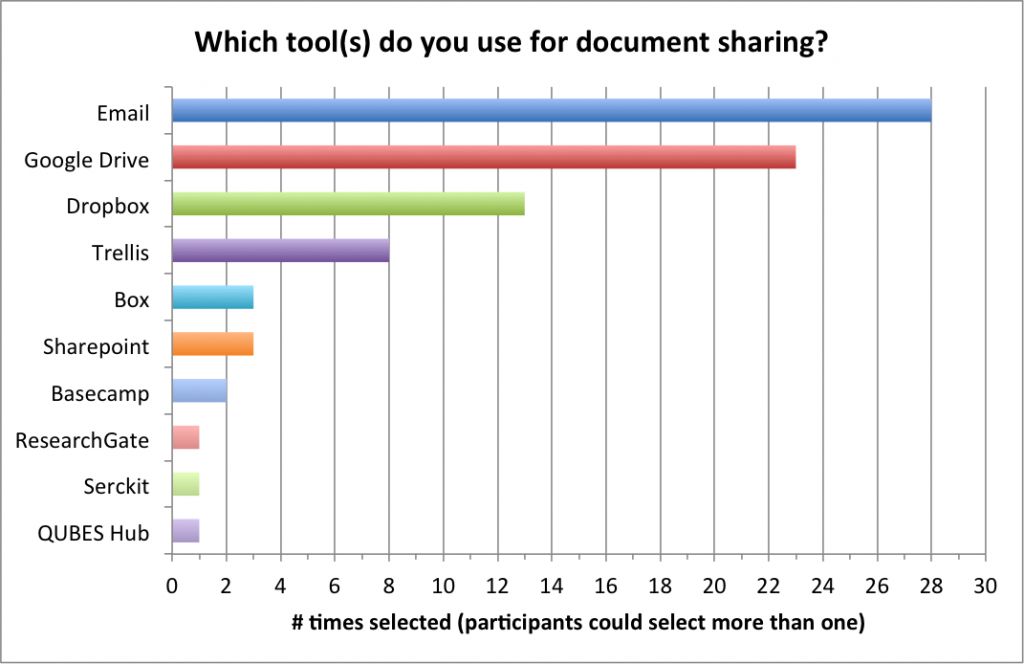Last week AAAS and Trellis hosted a three-day NSF-sponsored INCLUDES conference entitled: “The Technical and Human Infrastructure to Support Collective Impact of the INCLUDES Program at the Alliance and Network Levels”. The goal of the conference was to explore how small-scale pilot projects funded at the initial stage of the program might scale to larger collaborations.
To provide context for the discussions of collaboration infrastructure at the conference, we conducted a survey of tools and communication practices of the INCLUDES pilots. Here are three key takeaways based on 33 responses, covering 27 of the 37 total pilot projects.
1. Email’s not going anywhere
All participants (with projects ranging from local to national in scale and 5 to 100 people in size) used email as a communication tool. Even with the proliferation of alternatives, this more traditional form of communication is sticking around. We found that email is used somewhere between daily and weekly for the majority of projects, making it the most frequently used tool.
Survey respondents were mostly satisfied with email as a tool, but individual comments noted occasional difficulty receiving substantive responses to emails, in part due to the high volume of daily emails. These results correspond with those of the State of Scientific Community Management survey, which found that email was the most widely used communication channel for scientific communities.
2. Teams are conducting more asynchronous than synchronous communication
As shown above, text-based chat had the lowest adoption of all communication tools, followed by online discussions. Audio and video conferences were widely adopted, but used less frequently than email for “all team” communications.
Our results show that electronic all-team communications happen the most frequently (most often via email). Audio and video calls were conducted 2-3 times a month or less often with face-to-face meetings happening even less frequently.
It is interesting to note that the surveyed collaborations are mostly working with frequent asynchronous communication tools and infrequent synchronous tools.
3. More tools are in use for document sharing than creation
Respondents primarily use Microsoft Word and Google Docs for document creation and editing. This was one of the only areas we evaluated with such a clear preference for a small number of specific tools.
In contrast, the technological landscape for document sharing was much more varied.
While Email and Google Drive were the most popular tools for document sharing, Dropbox and Trellis were widely used as well. On average, a given project reported using over 2.5 document sharing tools.
While respondents reported overall satisfaction with their document management tools, the diversity of tools may pose a challenge as the projects scale. Higher numbers of participants and a greater volume of documents may require consolidation to increase efficiency.
At the conference we had some great discussions about the survey data, including whether asynchronous communication poses challenges for discussing failures or learning from challenges. We also noted the downsides of an over-reliance of email once projects begin to scale as email isn’t a great way of archiving information or making it available to future project participants.
Are you part of a collaborative project? What tools are you using to communicate and what challenges have you encountered?




This is an interesting topic. I, unfortunately, had to miss the conference. Did you happen to record it?
Hello Isaah,
Thanks for commenting! We did not record the conference, which was only for grant recipients, but as the INCLUDES program develops we will look for opportunities to disseminate the knowledge and approaches that emerge.